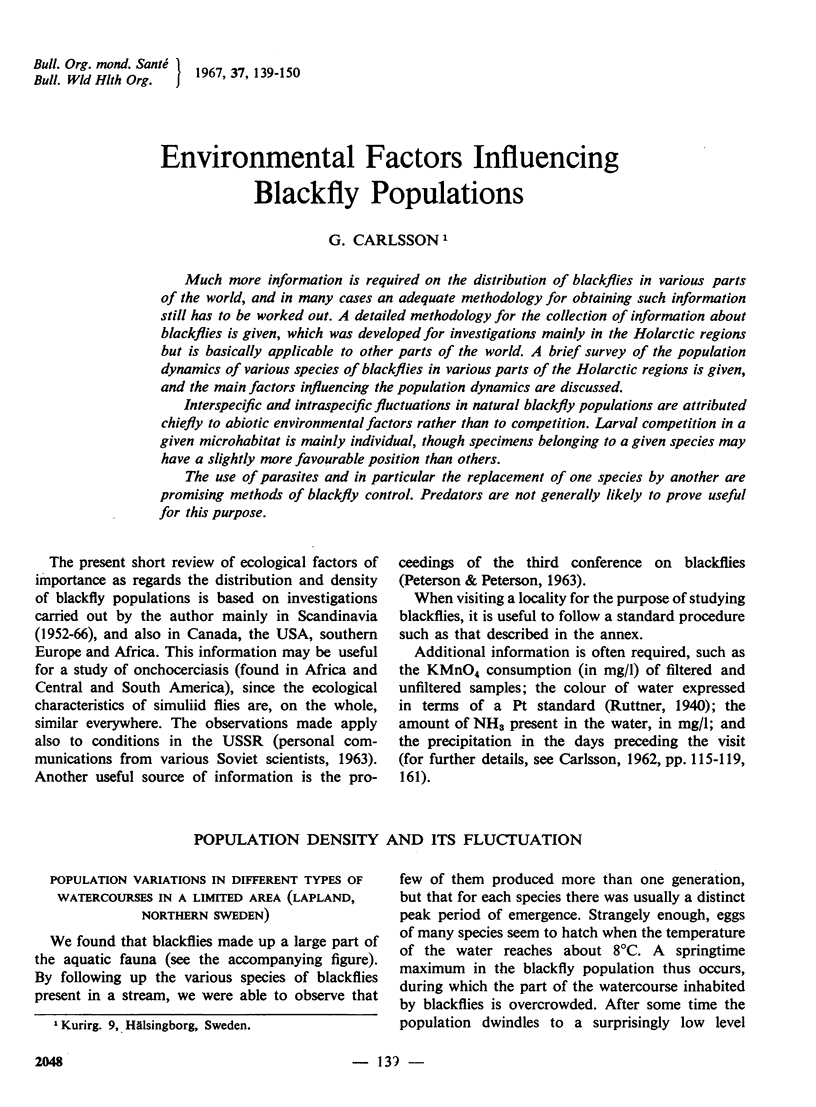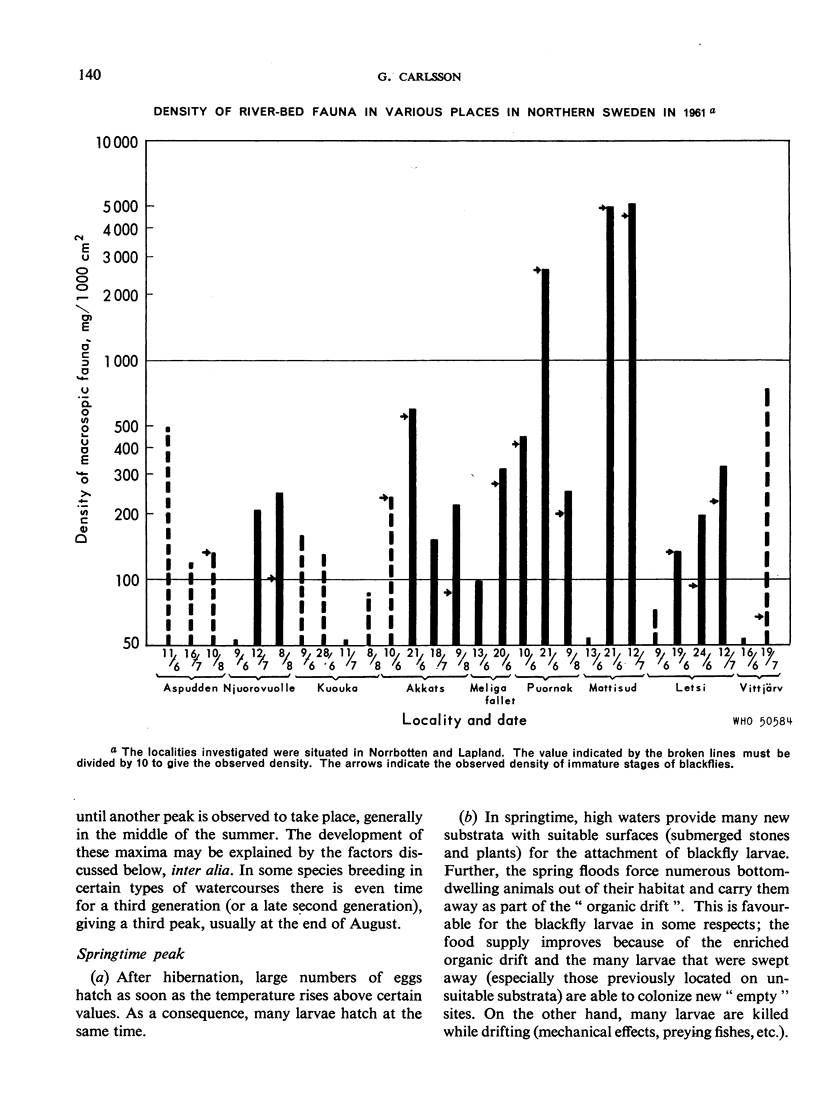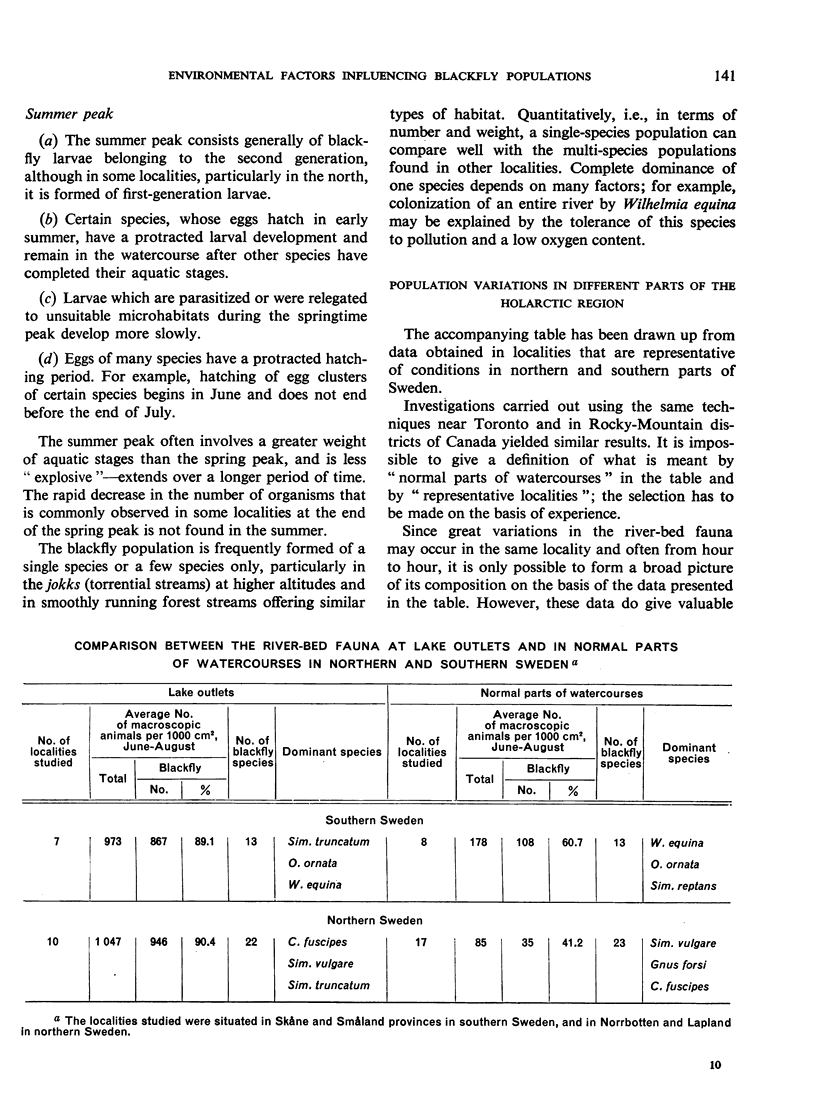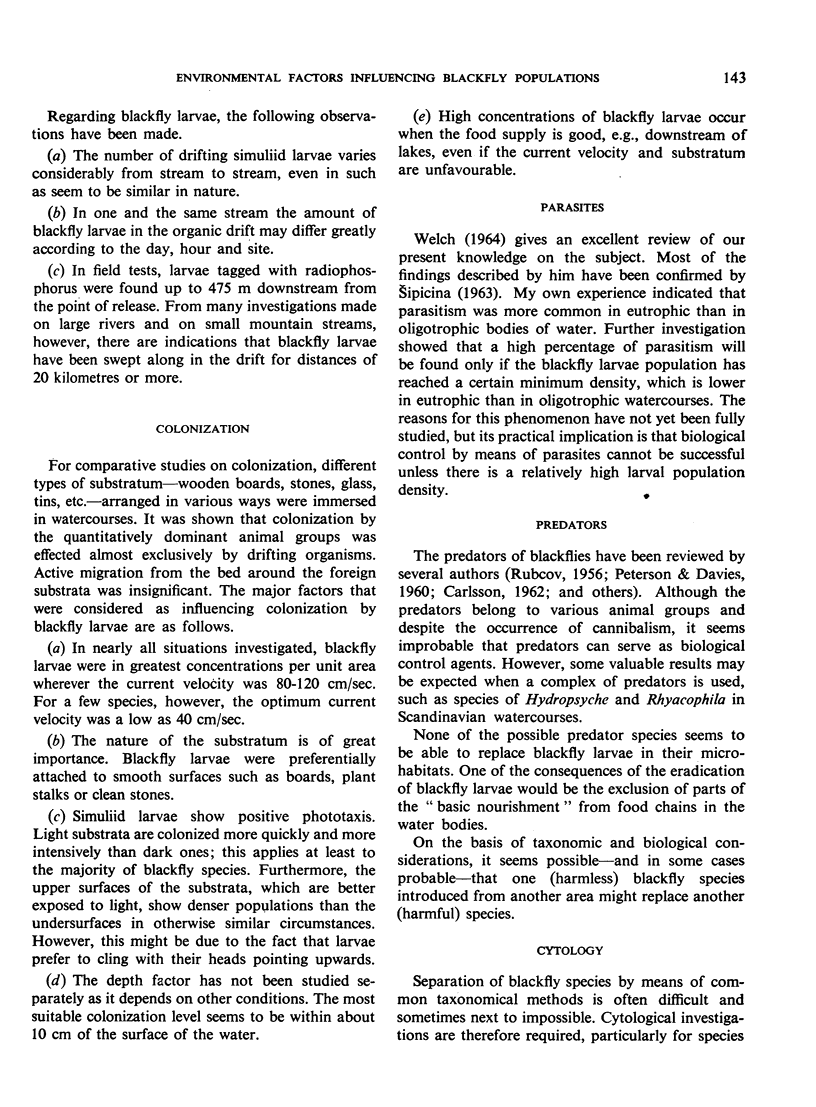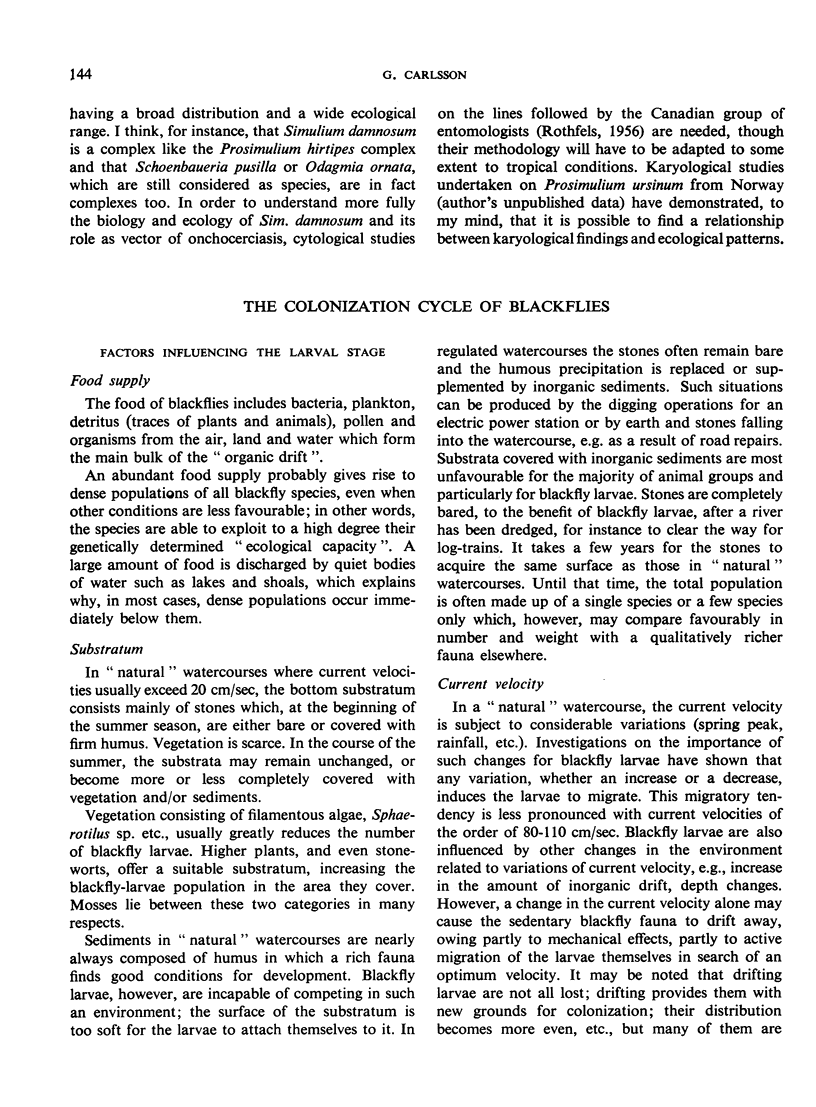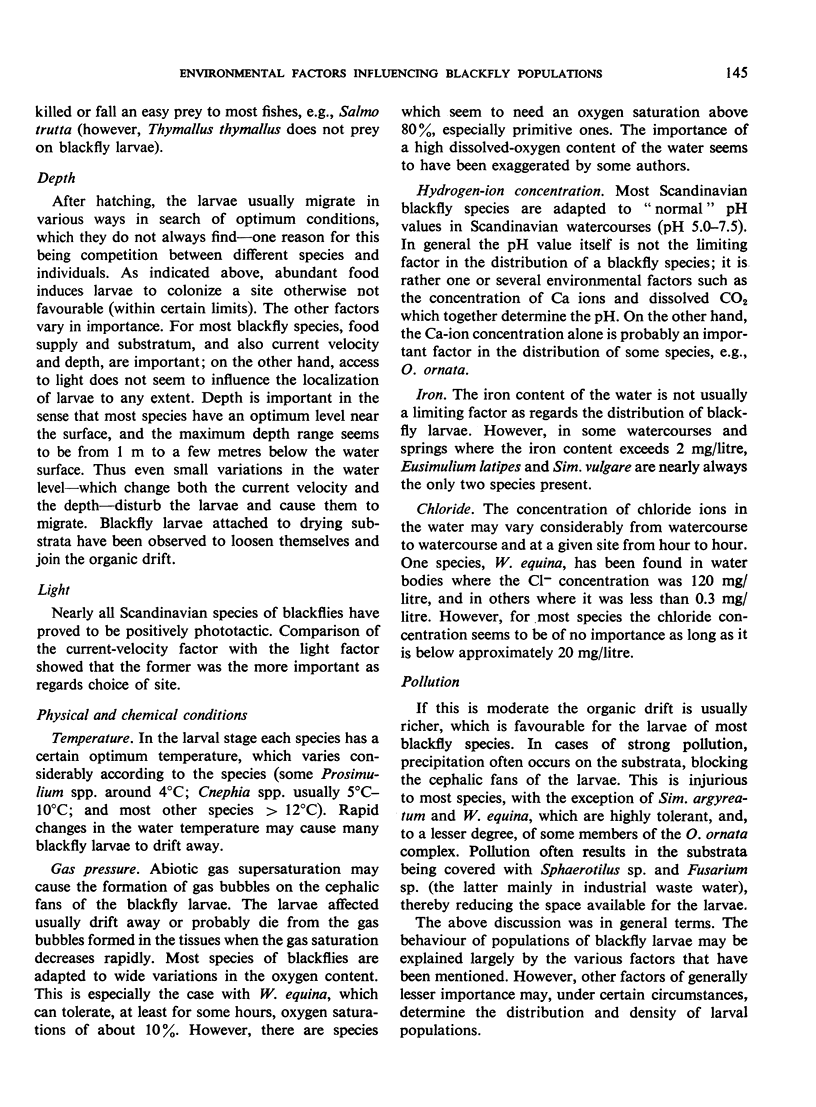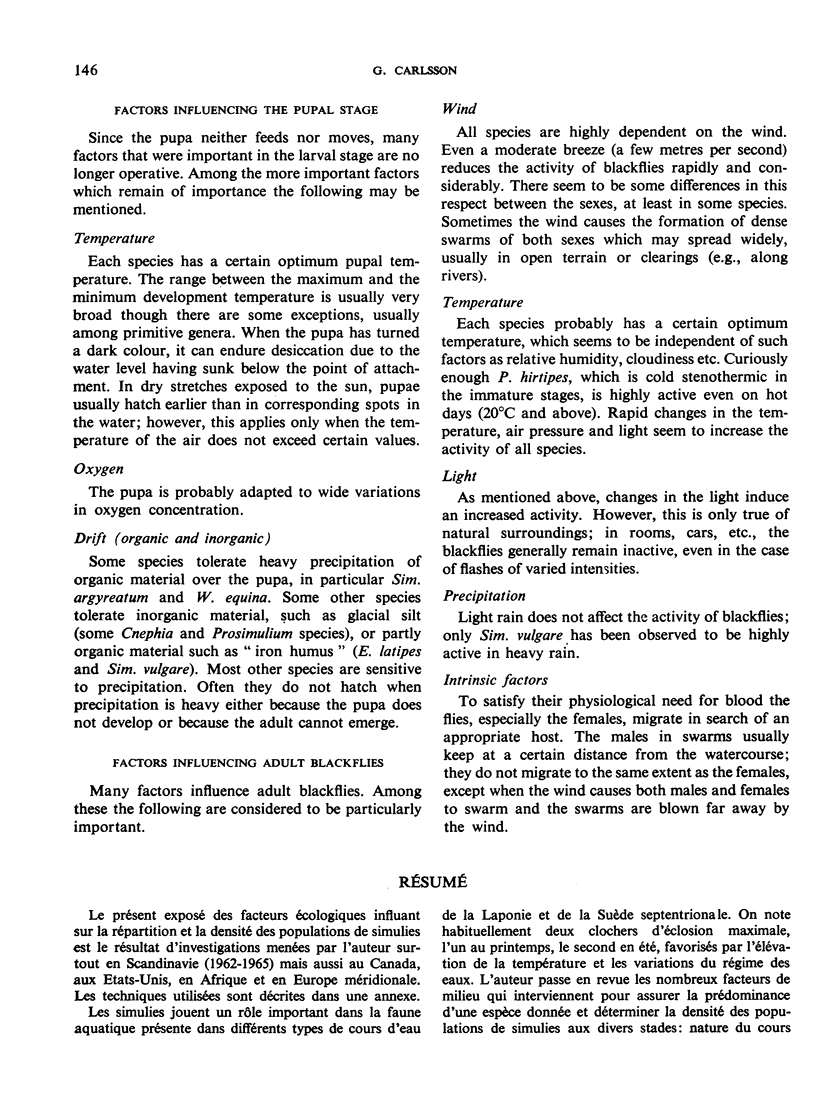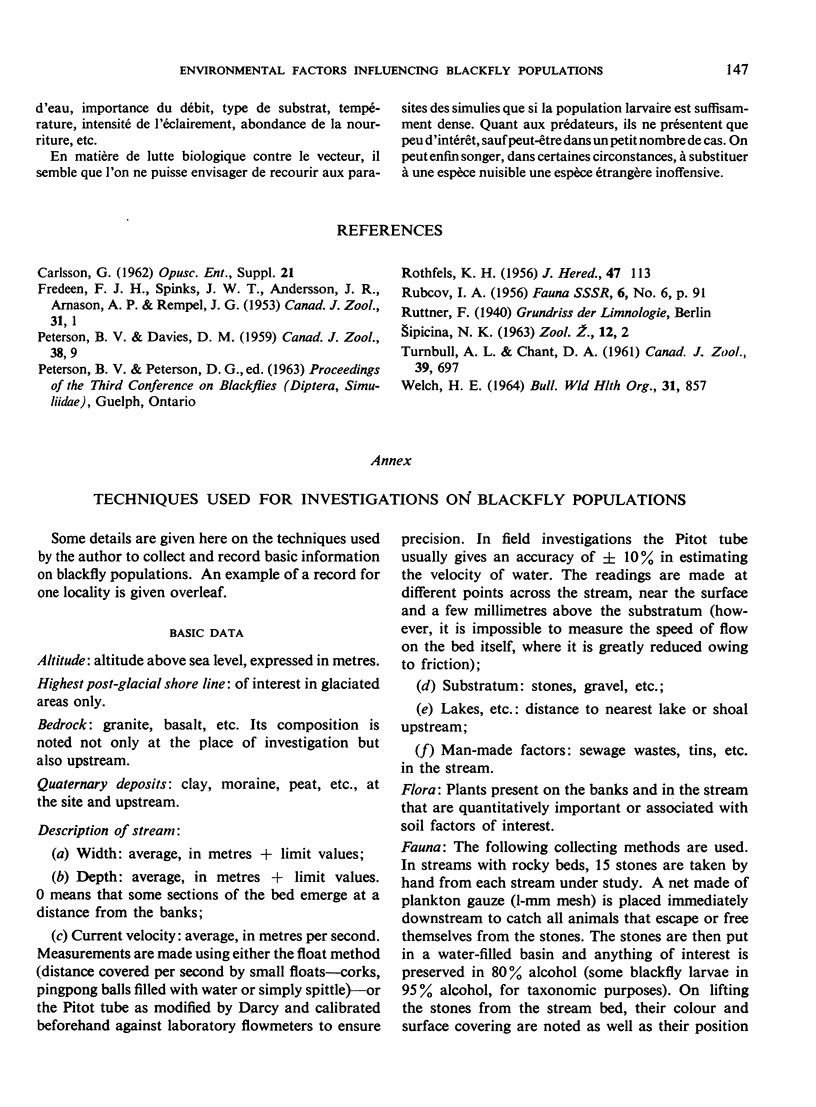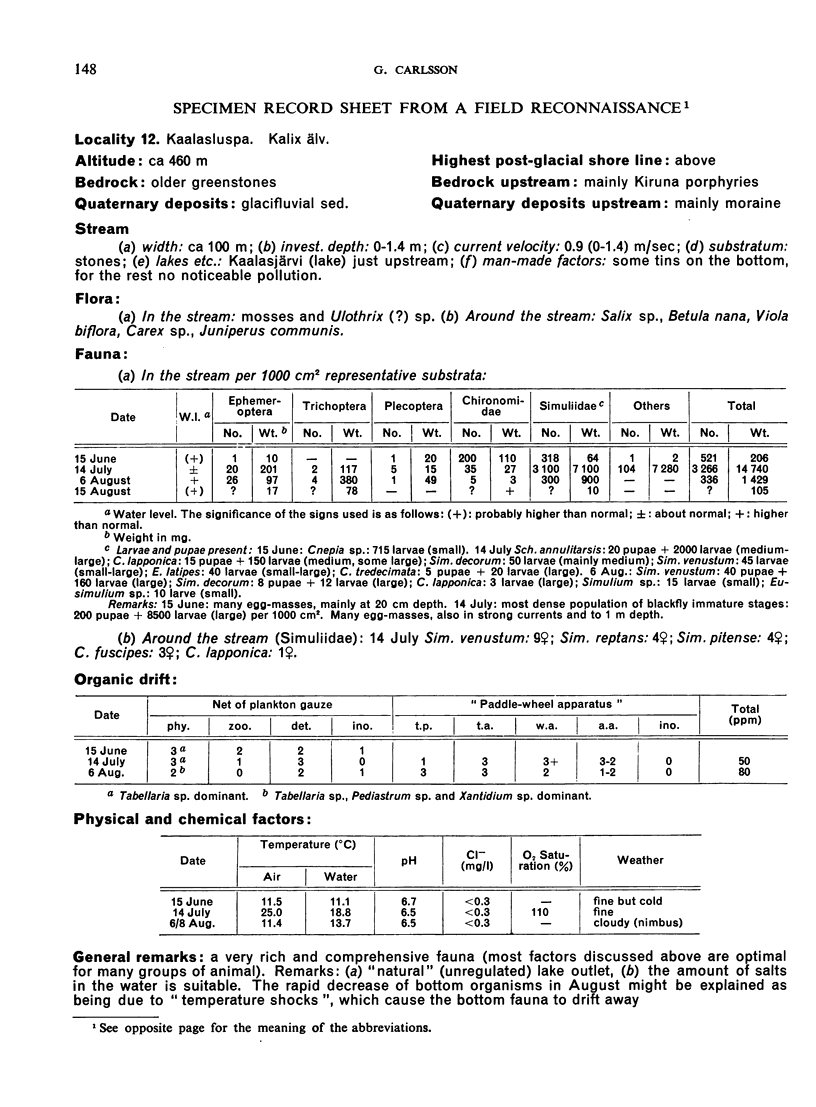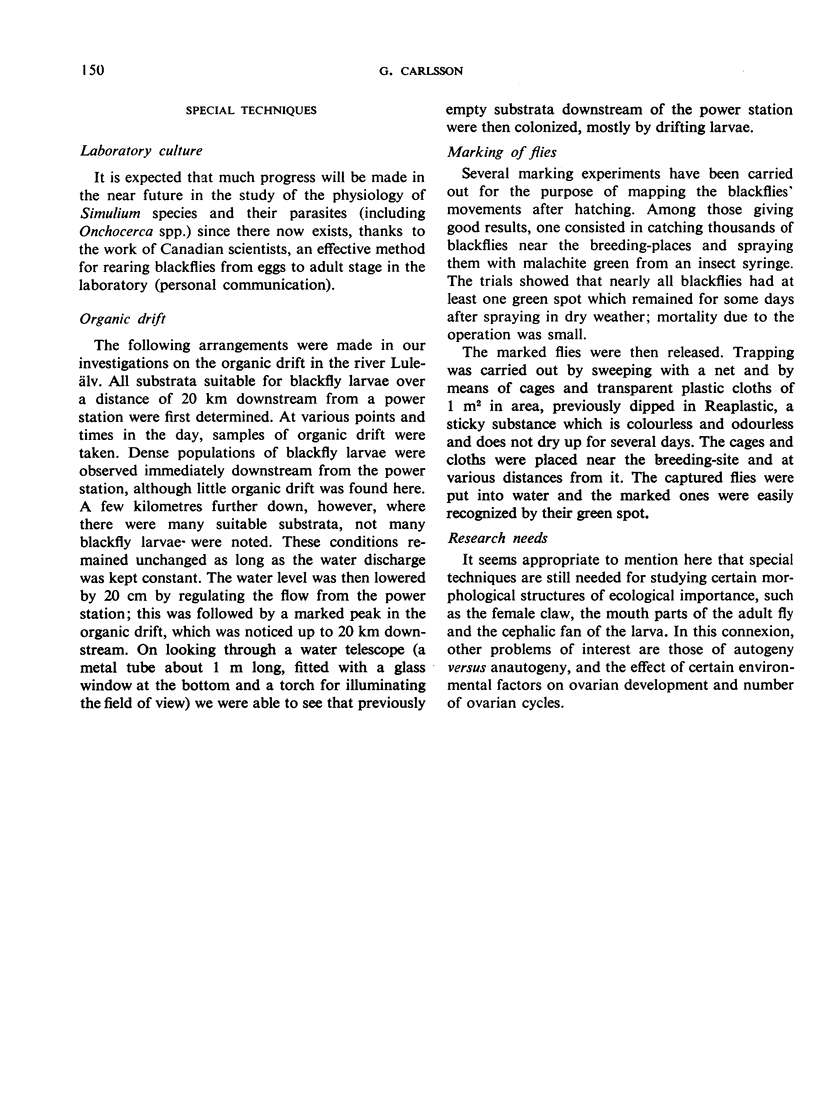Abstract
Much more information is required on the distribution of blackflies in various parts of the world, and in many cases an adequate methodology for obtaining such information still has to be worked out. A detailed methodology for the collection of information about blackflies is given, which was developed for investigations mainly in the Holarctic regions but is basically applicable to other parts of the world. A brief survey of the population dynamics of various species of blackflies in various parts of the Holarctic regions is given, and the main factors influencing the population dynamics are discussed.
Interspecific and intraspecific fluctuations in natural blackfly populations are attributed chiefly to abiotic environmental factors rather than to competition. Larval competition in a given microhabitat is mainly individual, though specimens belonging to a given species may have a slightly more favourable position than others.
The use of parasites and in particular the replacement of one species by another are promising methods of blackfly control. Predators are not generally likely to prove useful for this purpose.
Full text
PDF